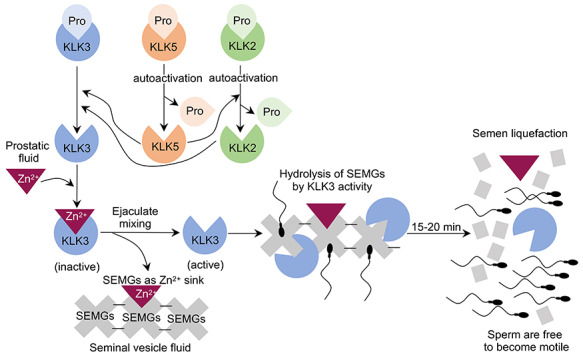Figure 2.

Signaling cascade of kallikrein 3 (KLK3) activation during liquefaction process. Pro-KLKs are secreted into the prostatic fluid. High concentration of Zn2+ in prostatic fluid inactivates KLK3 activity. After ejaculation, prostatic and seminal vesicle fluids are combined. SEMGs are available to sequester Zn2+ as SEMGs have higher affinity to Zn2+ compared to KLKs. Pro-KLK5 undergoes autocleavage to rid of pro-peptide sequences and autoactivates. Subsequently, KLK5 activates pro-KLK2 and 3. KLK2 also potentially activates pro-KLK3. Activated KLK3 then hydrolyzes SEMGs into smaller fractions. After hydrolysis, semen becomes liquefied and sperm gain their motility to transport to the upper female reproductive tract for fertilization.
